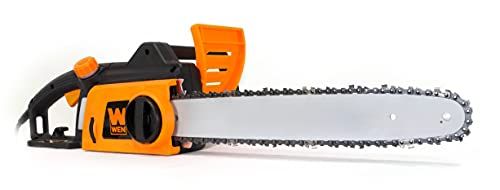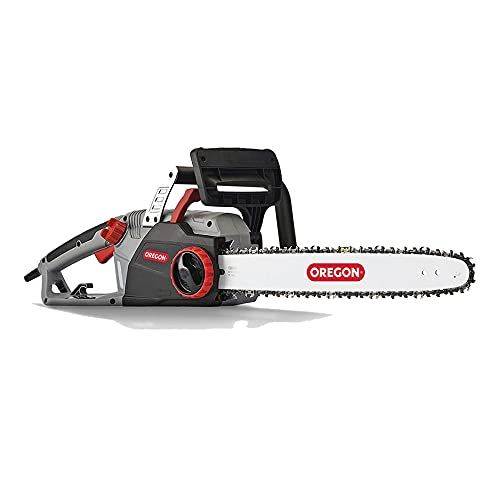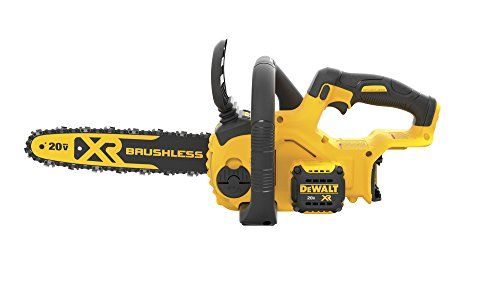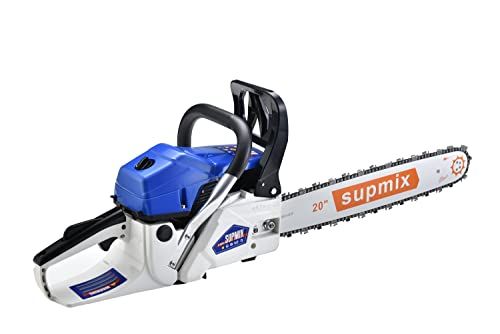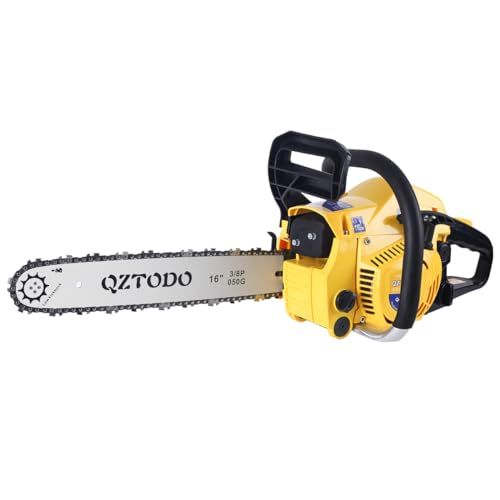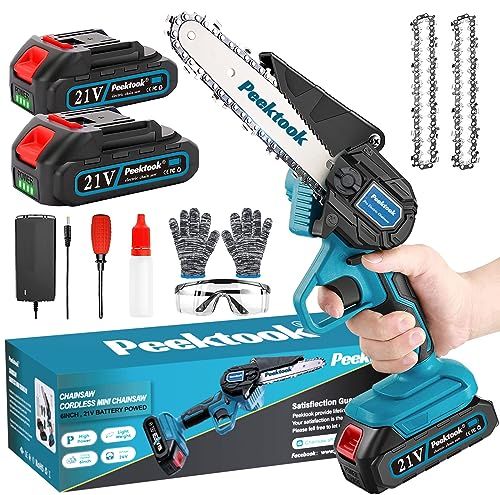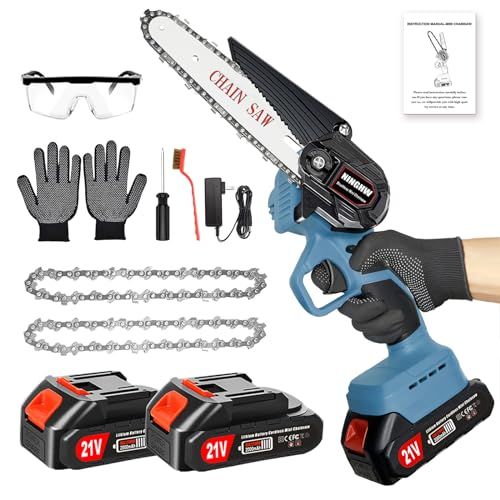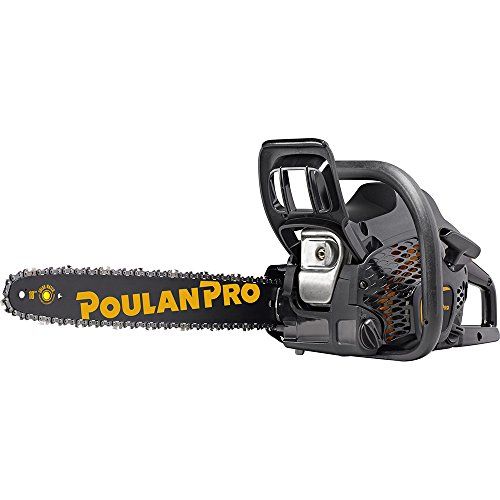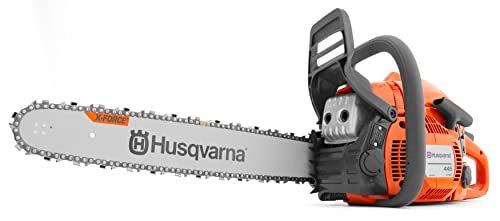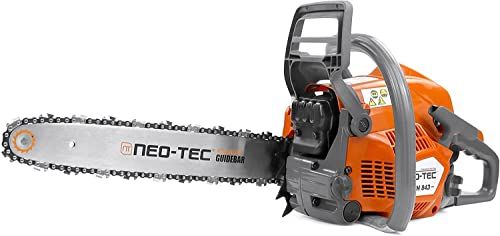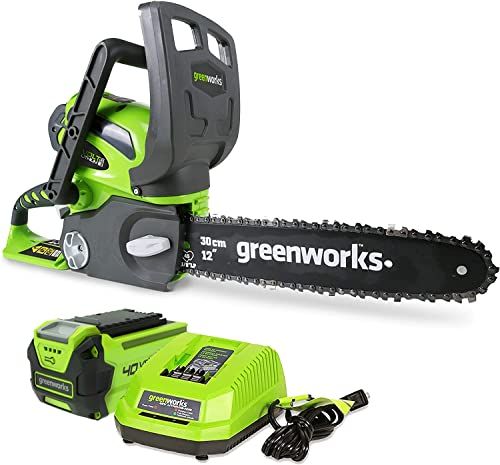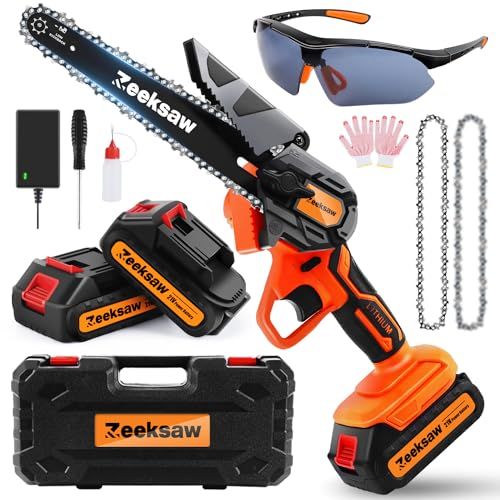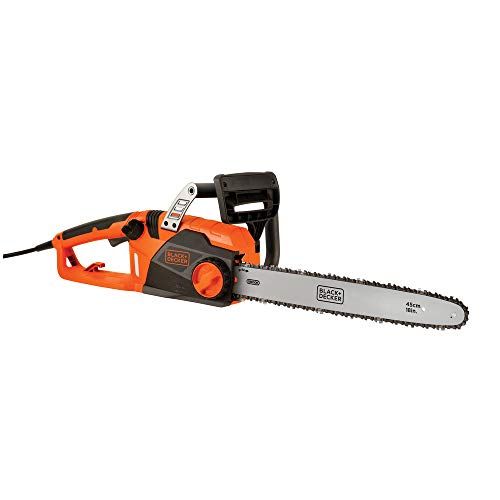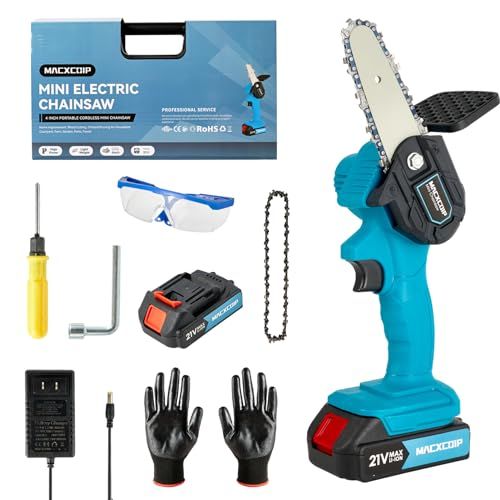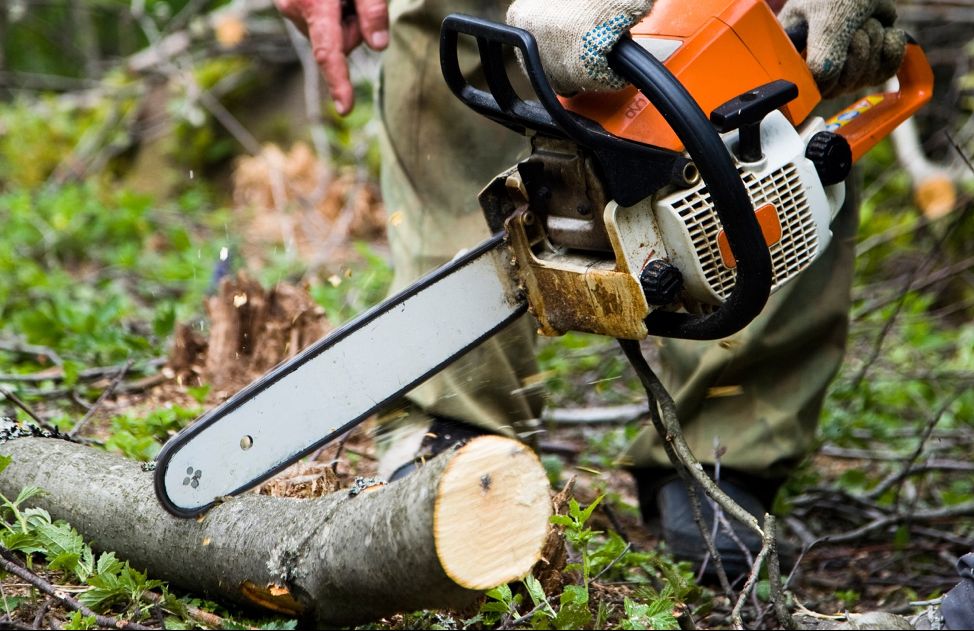
Chainsaws are a versatile power tool used for cutting wood, trees, and logs. They have become an indispensable tool for many homeowners, landscapers, tree care professionals, and construction workers.
Chainsaws consist of a power source (gasoline, battery, or electric), chain, guide bar, and engine that rotates the chain around the guide bar to cut. The operator uses handles and controls to direct the saw.
Chainsaws first emerged in the early 20th century. Before chainsaws, axes, handsaws, and crosscut saws were used to fell trees and cut lumber. Chainsaws enabled more efficient and faster cutting.
The first chainsaws were massive two-person gasoline powered models. Portable one-person chainsaws emerged in the late 1920s and evolved through the middle of the century. Electric chainsaws followed in the 1950s.
Today's chainsaws are much lighter, more powerful, and safer. Yet the basic components remain similar to earlier models. Advancements in materials, engine technology, ergonomics, and safety features continue improving modern chainsaws.
There are several types of chainsaws designed for different uses:
Gas chainsaws are the most powerful and ideal for frequent heavy duty use like felling large trees.
Electric chainsaws are quieter, lighter, and easier to maintain but need an electrical outlet and are less rugged.
Battery powered chainsaws provide portability without a cord and are good for smaller tasks.
Pole saws attach to an extension pole to reach high branches when pruning trees.
Understanding the capabilities of different chainsaw types allows buyers to select the right chainsaw for their specific cutting needs. With proper use, maintenance, and safety precautions, chainsaws enable efficient cutting and debris cleanup.
Chainsaw Safety
Operating a chainsaw requires attention to safety. Proper protective gear and following safe procedures can help prevent injury.
Protective Clothing
When using a chainsaw, you should wear:
Safety glasses to protect your eyes from sawdust and debris.
Hearing protection like earplugs or muffs to prevent hearing damage from the loud noise.
A hard hat to protect your head from falling branches.
Gloves to improve your grip and protect your hands. Look for gloves designed specifically for use with chainsaws.
Chainsaw chaps over your pants. These are made of cut-resistant fibers and will stop the chain if it touches your leg.
Steel-toe boots with non-slip soles to protect your feet and give you stability.
Safe Operating Procedures
Always read and follow the manufacturer's safety and operating instructions.
Check your chainsaw before each use and perform recommended maintenance. Make sure the chain is sharp and properly tensioned.
Clear away any brush, branches or obstacles before starting to cut.
Hold the chainsaw firmly with both hands. Keep your hands on the handles, and maintain secure footing.
Keep bystanders and animals at least 10 feet away from your work area.
Do not cut above shoulder height as this is unstable.
Stop the saw if the chain strikes anything. Check for damage before resuming cutting.
Kickback Dangers and Prevention
Kickback happens when the moving chain at the tip of the chainsaw bar touches an object and is rapidly propelled back toward the operator. This can cause severe injury. To help prevent kickback:
Keep your thumb wrapped around the front handlebar to maintain control if kickback occurs.
Avoid cutting with the saw tip or upper quarter of the bar.
Watch for pinch points where the saw could bind in the wood while cutting.
Use a chainsaw with built-in safety features like a chain brake, low kickback chain, reduced kickback bar, or kickback protection.
Follow these important safety practices to protect yourself and use your chainsaw effectively. Don't take short cuts - stay alert and work carefully.
Chainsaw Parts
The main components of a chainsaw are:
Engine
The engine provides power to the cutting chain. Chainsaw engines are typically 2-stroke gasoline engines, although some models may have 4-stroke or electric motors. The engine displacement is measured in cubic centimeters (cc) which indicates engine power. More cc's means more power.
Chain
The cutting chain is a loop of grinding steel links that cut through wood. Chains come in different pitches (distance between links) and gauges (link thickness). The right chain needs to match the guide bar.Kickback reducing chains have built-in safety features.
Bar
The bar guides the chain during cutting. Bars come in different lengths from 10" to over 30". Longer bars allow deeper cuts. The bar nose sprocket drives the chain. The bar groove gauges need to match the chain gauge.
Clutch
The centrifugal clutch engages the chain drive when the engine hits a high RPM. This allows the engine to get up to speed before engaging.
Throttle
The throttle controls engine speed. A trigger throttle with lockout allows easy speed control.
Chainsaw Maintenance
Proper maintenance is crucial for keeping your chainsaw running safely and efficiently. Here are some key maintenance tasks you should perform regularly:
Air Filter Care
Check the air filter every 5-10 hours of use and clean or replace as needed. A dirty air filter can restrict airflow to the engine.
Remove the air filter and gently tap it to remove loose debris. You can also use compressed air to blow it out.
If the filter is very dirty, wash it in warm soapy water. Allow to fully dry before reinstalling.
Replace the filter if it is excessively dirty or falling apart. Use only OEM replacement filters.
Fuel Mixture
Use fresh fuel with the proper gas/oil mix ratio recommended by your saw's manufacturer (usually 40:1 to 50:1). Old gas can clog the carburetor.
Check for water or sediment in the fuel and filter it if needed. Water will cause performance issues.
Clean the fuel filter periodically. Clogged filters affect engine performance.
Chain Lubrication
Check chain oil levels regularly and top up as needed. Running a dry chain will damage the bar and chain.
Make sure the oil delivery system is clear of debris. Clogs can prevent proper lubrication.
Inspect the clutch drum oil spout for damage or wear. Replace if needed.
Use only bar and chain oil. Other lubricants can cause chain/bar damage.
Chain Sharpening
File down any damaged or rounded cutting teeth to restore sharpness. Use the correct file size for your chain.
Maintain the proper filing angle according to your chain's specifications. Incorrect angles affect cutting.
File all cutters to the same length to keep the chain balanced and running smoothly.
Replace the chain once it loses more than 25-30% of its length from sharpening.
Following proper maintenance procedures will keep your chainsaw operating safely and efficiently for years of use. Don't neglect routine care and inspection.
Chainsaw Troubleshooting
Chainsaws are rugged tools built to withstand tough use, but they still can develop issues. Here are some common chainsaw troubles and how to address them:
Won't Start
If your chainsaw won't start, first check that you have fuel in the tank and the spark plug is fitted properly. Also ensure the choke is on if the engine is cold. Check for the following:
Blocked fuel line - Disconnect the line where it enters the carburetor. Blow through it to check for blockages.
Faulty spark plug - Remove the plug and check that the electrode gap is correct. Replace if needed or if the plug is wet indicating fuel flooding.
Overflowing carburetor - If flooded, turn the chainsaw over to drain excess fuel before trying to start again.
Sheared flywheel key - This can prevent the engine from firing. Replacement may be needed by a repair shop.
Hard to Start
A chainsaw that is hard to start may indicate issues with compression, fuel delivery, or ignition:
Check the air filter and replace if dirty.
Test the engine compression. If low, internal engine work may be required.
Examine the spark plug for fouling, improper gap, or other issues. Replace if needed.
Clean the carburetor jets, fuel lines, and filters which could be restricting fuel flow.
Runs Rough
Some common causes for a chainsaw running rough or sputtering include:
Dirty air filter - Replace the air filter if it's clogged with dust and debris.
Incorrect carburetor adjustment - Tune the carburetor following the manufacturer's specifications.
Faulty fuel lines - Check for cracks or holes in the fuel lines causing an irregular fuel supply.
Engine issues - Problems like a worn piston ring or scored cylinder bore can lead to poor performance.
Chain Loosening
There are a few reasons why a chainsaw chain can loosen with use:
Not properly tensioned - The chain needs to be checked and tightened regularly as part of maintenance.
Stretching chain - A chain that has stretched from wear will need to be replaced.
Worn sprocket - Check the sprocket teeth for wear. A damaged sprocket tips the chain sideways, loosening it.
Damaged bar - The bar can bend or wear, allowing the chain to derail. Replace a damaged guide bar.
Regular chain tensioning and replacing stretched components will help keep the chain running tight.
Chainsaw Features
Chainsaws come in gas-powered and electric models, each with their own advantages.
Gas vs Electric
Gas chainsaws are more powerful and ideal for heavy duty use like cutting down trees or logging. They have longer run times as you can carry extra gas to refuel. However, gas chainsaws require more maintenance like changing the spark plugs and air filters. They are heavier and louder than electric saws.
Electric chainsaws are lighter, quieter, and easier to maintain. They are better for home use like trimming bushes or cutting firewood. Electric chainsaws limit your range since you're tethered to an outlet. They are less powerful than gas models.
Chain Brake
An important safety feature is the chain brake which stops the chain immediately if kickback occurs. This can prevent serious injury to the operator. Most models have a hand guard that activates the brake when pushed forward in an emergency. Some also have an inertia activated chain brake that senses sudden jerking motions automatically.
Anti-Vibration
Cutting with a chainsaw produces heavy vibration that can cause hand-arm vibration syndrome over time. Many modern chainsaws have anti-vibration technologies to reduce vibration levels transmitted to the user's hands. This includes vibration damping handles and shock absorbing mounts between the engine and chassis.
Auto Chain Oiling
Another standard feature is an automatic chain oiler that applies lubricating oil to the chain while cutting to prevent overheating that can damage the bar and chain. Most allow adjusting the oil flow rate as needed for the wood type and conditions. Auto oiling maintains optimal lubrication and extends the life of the chain.
Chainsaw Brands
When buying a chainsaw, you'll want to consider buying from a reputable brand known for quality and performance. Here are some of the top chainsaw brands to look for:
Stihl
Stihl is one of the most popular and trusted chainsaw brands used by professionals. Founded in Germany in 1926, Stihl pioneered the first modern chainsaw. Stihl saws are known for their power, durability, reliability, and innovation. They make chainsaws for everything from light homeowner use to logging. Some of their most popular models include the MS 250, MS 261, and MS 362.
Husqvarna
Husqvarna is another premier professional-grade chainsaw brand with over 325 years of experience making cutting equipment. Based in Sweden, Husqvarna is known for high performance saws built to withstand heavy, frequent use. Their chainsaws feature robust air filtration, anti-vibration technology, and easy starts. Top models include the 440, 445, 450, and 460 rancher series.
Makita
Makita launched in 1915 as an electric motor repair company and has since become a global leader in power tools. Their chainsaws provide reliable, efficient performance powered by Makita-built motors. They have a range of options for occasional to regular use, including the UC series for homeowner tasks and the pro-level XCU models.
Echo
Echo has over 70 years of experience developing robust, easy-to-use outdoor power equipment. Their chainsaws offer professional grade durability, power, and runtimes packed into compact, ergonomic designs. Top options include their mid-duty 400 series and heavy-duty 600P/610P models.
Poulan
Poulan offers affordable, entry-level chainsaws great for occasional use around the home. Their chainsaws focus on ease of use and convenience but lack the power and durability for frequent, heavy-duty use. Top options include the Pro PR4218 and P3314 chainsaw models, ideal for basic property maintenance.
Chainsaw Uses
Chainsaws are versatile power tools used for several applications beyond basic wood cutting. Common chainsaw uses include:
Tree Felling - Chainsaws allow loggers and homeowners to safely and efficiently fell entire trees by cutting a notch on the side the tree will fall towards. This is an extremely dangerous task that requires proper safety gear and training. Professional-grade chainsaws with long bars are typically used.
Limbing - After a tree has been felled, limbing is the process of removing all the branches from the trunk. Chainsaws allow operators to easily cut away limbs while the log remains on the ground.
Bucking - Bucking refers to cutting a felled tree trunk into smaller logs or firewood. Chainsaws are an indispensable bucking tool for efficiently dividing trunks for transport or wood processing.
Carving - With the proper chainsaw attachments and artistic skill, chainsaws can be used to sculpt and carve wooden pieces. Specialized carving bars allow detailed cuts for creating decor, furniture, bears, etc.
Pruning - While pole saws are ideal for high branches, chainsaws can prune and thin tall hedges and ground level tree limbs. Their portability aids pruning jobs like clearing brush. Safety is critical to avoid kickback while pruning.
Chainsaws are multi-purpose tools that facilitate several essential cutting applications from felling massive trees to finely shaping wood sculptures. With training and protective equipment, they can tackle limbing, bucking, carving, pruning jobs and more. Chainsaws allow efficient and versatile wood-cutting unmatched by hand saws or axes.
Chainsaw Accessories
Chainsaws require various accessories for optimal performance and safety. Some key chainsaw accessories include:
Chains
The chain is one of the most important components of a chainsaw. Chains consist of cutting links that need to be kept sharpened. There are different types of chainsaw chains based on the cutting teeth and chain pitch. When selecting a replacement chain, it's crucial to match the chain type, gauge, pitch and drive links to your chainsaw model.
Bars
The bar is the long metal piece that supports and guides the saw chain. There are different bar lengths ranging from 10 to over 30 inches. Longer bars allow deeper cuts, while shorter bars provide more control. The bar size must match the chainsaw. Look for bars made of durable, rigid metals to reduce vibration and kickback.
Helmets
Chainsaw helmets are essential safety gear when operating a chainsaw. Helmets protect the head from falling debris and branches. They should include ear muffs to dampen noise and mesh visors to prevent facial injuries from wood chips and sawdust. Look for helmets meeting industry safety standards.
Chainsaw Mills
A chainsaw mill is an attachment that enables a chainsaw to cut lumber and beams. Chainsaw mills provide an economical, portable sawmill option compared to large stationary sawmills. They attach to the chainsaw bar and guide it along the log to cut straight, even boards. Chainsaw mills are ideal for milling timber on-site.
Accessories like chains, bars, safety gear and sawmills enhance chainsaw functionality for various applications. Investing in quality accessories helps maximize productivity and safety when using chainsaws.
Chainsaw Buying Guide
When buying a chainsaw, there are several key factors to consider:
Power
The power of a chainsaw is measured in horsepower (HP) or cubic centimeters (cc). More power allows you to cut larger pieces of wood more quickly. Light duty chainsaws range from 30cc-42cc, medium duty from 42cc-50cc, and heavy duty from 50cc and above. Consider what types of projects you'll use the saw for when deciding on power.
Weight
Look at the power-to-weight ratio of chainsaws you're considering. The lighter a saw is, the easier it will be to handle and control. But more powerful saws will be heavier. Consider getting a saw with an ergonomic design to help offset the weight.
Features Needed
Think about useful chainsaw features like an automatic chain oiler, anti-vibration technology, chain brake, front hand guard, auto chain tensioner, and easy start ignition. Consider your needs and budget when deciding on features.
Brand Comparison
Leading chainsaw brands include Stihl, Husqvarna, Echo, Makita, and Dewalt. Compare reputation, quality, price, and availability when choosing a brand. Professional landscapers often prefer Stihl and Husqvarna, while homeowners may want a more budget-friendly brand.
Budget
Chainsaw prices range from under $100 for simple electric models to over $1000 for high-end professional gas chainsaws. Set a budget based on your needs and how often you'll use the saw. Sales and refurbished options can also help find an affordable chainsaw. Consider the long-term costs of maintenance and repairs as well when budgeting.
Chainsaws comparison
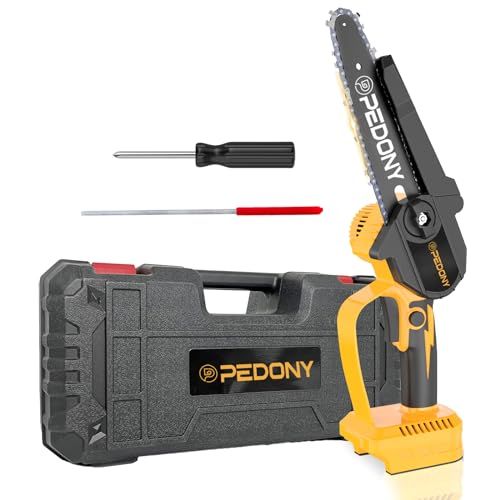 |  | 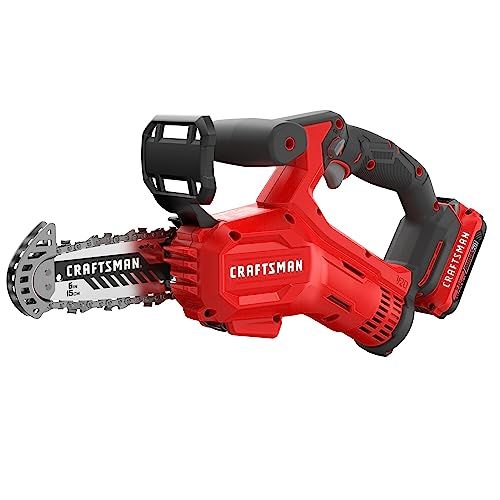 |  | 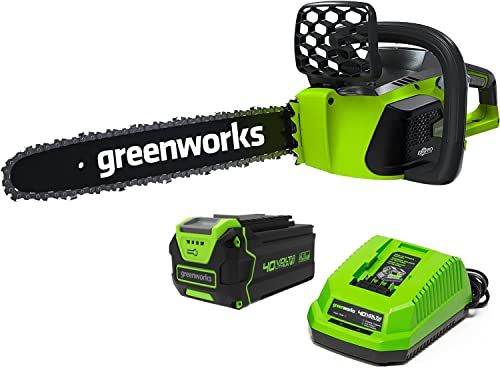 | |
|---|---|---|---|---|---|
| Model | LT-DW-LJ-6-JS-SM | CMCCS320D1 | 20312 | ||
| Brand | PEDONY | SALEM MASTER | Craftsman | XABCHUI | Greenworks |
| Weight | 2 pounds | 18.96 pounds | 8.03 pounds | 3.78 pounds | 10.36 pounds |
| Color | - | - | - | Yellow-0 | Black/Green |
| Power source | Battery Powered | Gas Powered | - | Battery Powered | Battery Powered |
| Item weight | 2 Pounds | - | - | 3.78 Pounds | 10.36 Pounds |
| Product dimensions | 2.28"L x 3.46"W x 14.57"H | 20"L x 10"W x 12"H | 20.35"L x 10.65"W x 5.52"H | 15"L x 5.3"W x 4.6"H | 31"L x 9"W x 8.5"H |
| Country of origin | - | - | China | - | China |
| Chain length | - | - | 6 Inches | - | 16 Inches |
| Voltage | - | - | - | - | 40 |
| Horsepower | 550 Watts | 3.4 hp | - | 550 Watts | - |
| Battery capacity | - | - | - | - | 4 |
| Battery cell type | - | - | - | Lithium Ion | Lithium Ion |
| Warranty description | - | - | - | - | 4 yrs - tool warranty 2 yrs -battery warranty lifetime motor warranty |
FAQ
What is a chainsaw used for?
A chainsaw is a portable mechanical saw that cuts using a set of teeth attached to a rotating chain. Chainsaws are typically used for cutting wood, especially for felling trees, bucking logs, and pruning large branches.
What are the main parts of a chainsaw?
The main parts of a chainsaw include: engine, clutch, chain, bar, sprocket, carburetor, filter, throttle, choke, and starter cord.
How does a chainsaw work?
A chainsaw works by pulling a rotating chain with sharp teeth over a guide bar. The chain is rotated at high speed by the engine, which is powered by gasoline or electricity. As the chain rotates, the teeth cut through wood.
What safety equipment should I use when operating a chainsaw?
When using a chainsaw, you should always wear proper safety equipment like: chainsaw chaps or pants, steel-toed boots, gloves, eye protection, hearing protection, and a hard hat.
How do I start a gas chainsaw?
To start a gas chainsaw:
Fill the fuel tank with a mixture of gasoline and 2-stroke engine oil.
Turn the choke to the 'start' position.
Pull the starter cord firmly until the engine starts.
Once started, turn the choke to the 'run' position.
Allow the engine to warm up for a few minutes before operating the saw.
What is chain tension and how do I adjust it?
Chain tension refers to how tight the chain is around the guide bar. Proper chain tension is important for safe and efficient operation. To adjust chain tension, locate the tension adjustment screw or nut on your chainsaw. Loosen the bar clamp nuts, then tighten the tension screw to tighten the chain or loosen the screw to loosen the chain. Retighten the bar clamp nuts and check the chain tension.
How do I sharpen the chain on my chainsaw?
To sharpen the chain on your chainsaw:
Remove the chain from the saw.
Secure the chain in a chain sharpener or vise.
File each cutter at a 30° angle with even pressure.
Make several light passes with the file instead of heavy passes.
Check your work with a chain gauge tool to ensure even sharpening.
Reinstall the chain and test the sharpness on a piece of wood.
What is kickback and how can I avoid it?
Chainsaw kickback occurs when the rotating chain at the tip of the guide bar contacts an object, which causes the guide bar to suddenly lift up and back towards the operator. To avoid kickback:
Hold the chainsaw firmly with both hands.
Keep a solid stance and balance.
Do not overreach.
Do not operate a chainsaw above shoulder height.
Be aware of the location of the chain and guide bar at all times.
How do I fell a tree with a chainsaw?
To fell a tree with a chainsaw:
Plan your cut and clear the area around the tree.
Make a notch cut on the side of the tree facing the desired felling direction.
Make a felling cut on the opposite side of the trunk into the notch.
As the tree begins to fall, shut off the chainsaw and retreat along your escape path.
Ensure the tree has completely fallen before approaching again.
How should I maintain my chainsaw?
To properly maintain a chainsaw:
Regularly check chain tension and sharpen the chain.
Clean the air filter and replace when necessary.
Inspect the sprocket for damage or excess wear and replace as needed.
Clean the guide bar groove and oil port.
Inspect the clutch and brake for damage or excess wear.
For gas saws, drain old fuel and run the carburetor dry before storing.
Store the chainsaw in a dry location with the chain and bar covered.
